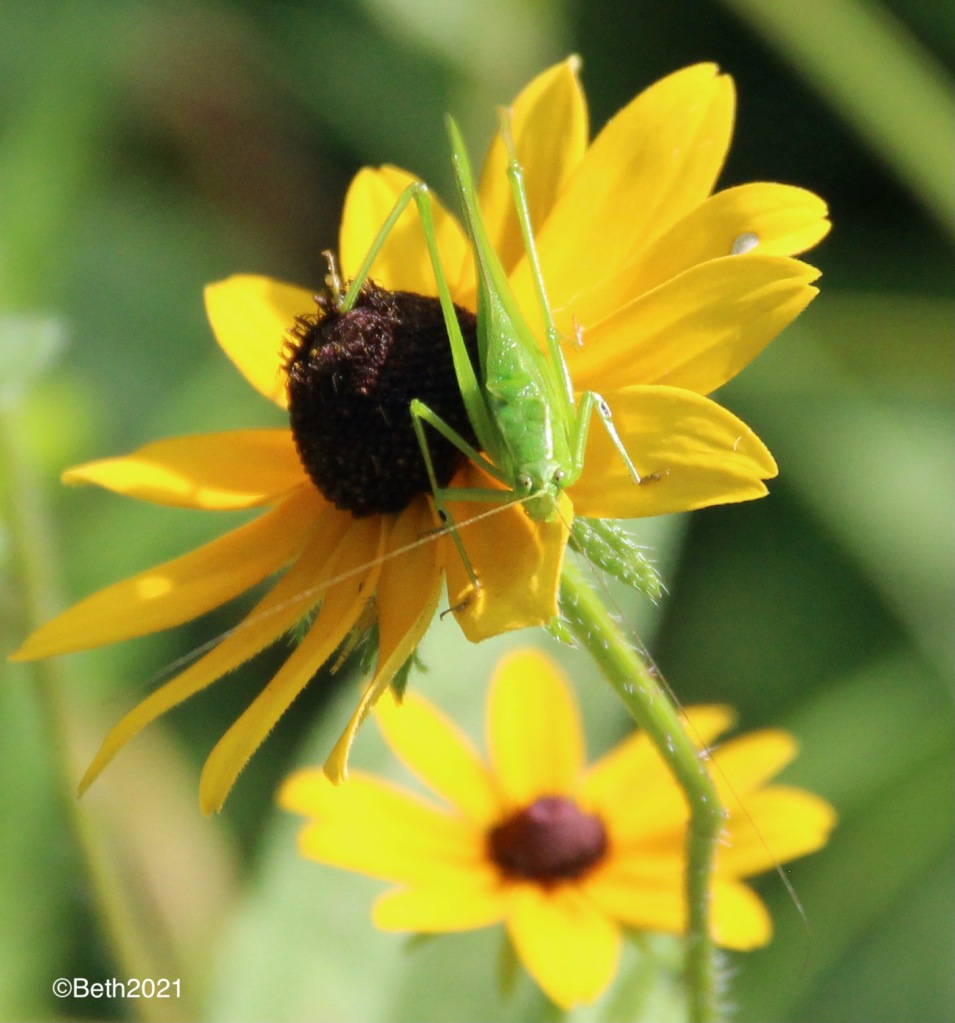
Walk outside and listen on a late-summer or early autumn evening. Insect music has replaced the chorus of robins, mourning doves, northern cardinals and other birds. The new songsters might include tree and field crickets, cicadas, grasshoppers and katydids.
Unlike their more somber-colored cricket cousins, katydids are often bright green and are well camouflaged by plant leaves and stems. Very long antennae and wings held vertically over the body distinguish them from grasshoppers. Many could pass for a small leaf on a plant! I often hear katydids calling, but rarely see them.
Similar to their cricket kin, katydids create sound by rapidly moving the sharp edge of one wing against a ridge of bumps on the other wing — this is called stridulation. Each species creates a different sound. Most produce clicks, rattles or buzzes that differ in pitch, pattern and volume. Only one species, the common true katydid (Pterophylla camellifolia) “says” its name. (The link includes both group and individual recordings.)

Katydids have narrow hearing organs located below each knee on their front legs. Though the location differs from mammalian ears, the ear structure is similar to our own. Simply put, sound waves cause a katydid’s eardrums to vibrate. The vibrations rock a small plate that transmits sound waves to the auditory vesicle, which contains fluid. The waves move through the fluid over tiny sensory cells that glean information and send electrical impulses to the katydid’s brain. Scientists theorize that locating a mate and avoiding predators are two key purposes of katydid hearing.
What eats katydids? Owls, kestrels, other birds, rodents, tree frogs, insects and spiders prey on them. Mainly vegetarians, katydids eat leaves and flowers of plants, but sometimes eat insects — including other katydids!
Next time you’re outside in the evening, listen for katydid calls. Crickets aren’t the only nighttime musicians!
Further Reading

Beautiful photo and such interesting information.
Thank you.
Thank you, Mary!
I love reading your entries. You always expand the world around you to allow others to share and see through your eyes.
Thank you!
Thank you, Lisa!
How fascinating. I had no idea that katydids’ hearing organs were located on their legs.
Hi Tanja, I found it so interesting to learn about their ears, too — and how similar they are in function to mammalian ears! I’ve read your blog a number of times and really enjoy it. Thanks for reading mine.
Thank you, Beth. Nature never ceases to amaze us!